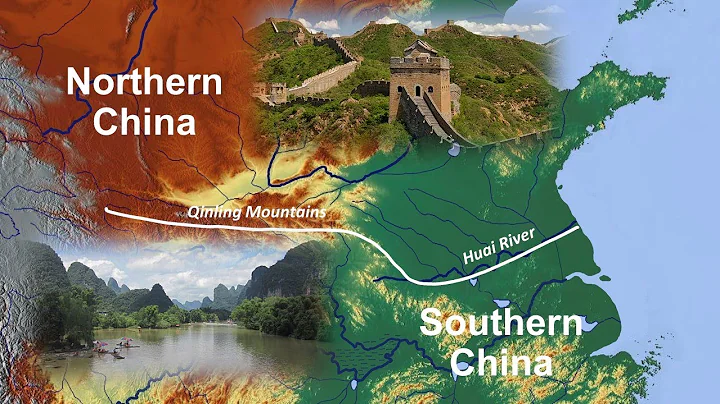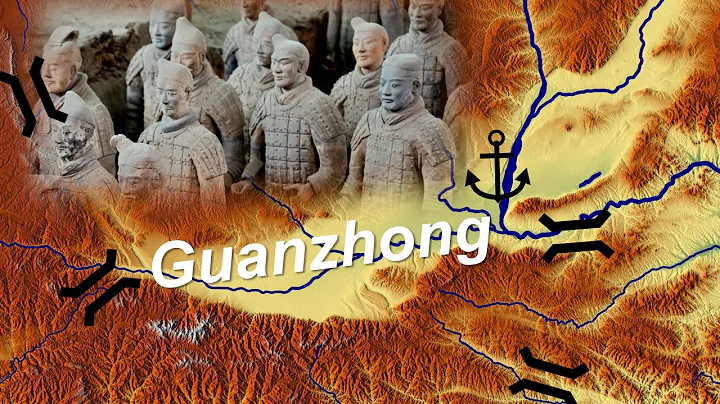Guangrao County is located in the south of Dongying City, on the edge of Laizhou Bay of the Bohai Sea. Guangrao has been a county since the Qin Dynasty . It was called Le'an , Qiancheng, and Langhuai in ancient times. It is the birthplace of soldier Sun Wu, the birthplace of Shandong Lu Opera, and the origin of Chinese Qibi. It has been rated as a thousand-year-old city by the United Nations Geographical Names Organization. Ancient County.

Historical evolution
Guangrao has a long history. The pottery and human bones discovered at the "Fujia" site and the "Yingzi" site prove that these two sites belong to the Dawenkou Culture and the Longshan Culture, indicating that southern Guangrao was inhabited more than 4,000 years ago. Counting from the official records, it has a history of more than 2,000 years. As far back as the Tang, Yu, and Xia periods, this was a barren land retreated from the sea and was under the jurisdiction of Qingzhou. During the Shang Dynasty, it was the territory of Yingzhou. Zhou Shi also belonged to the state of Qi.
In " Han Feizi ", there is a sentence " Qi Jinggong and Yan Zi traveled in Shaohai and climbed to the cypress platform to look at their country." Cypress sleeping platform is now Huantai, and the historical sites are still there, which shows that our county has a long history. By 386 BC (that is, the 16th year of King An of Zhou Dynasty), it was called "Qiancheng" and belonged to the state of Qi. After the Qin Dynasty merged with the Six Kingdoms, the feudal system was abolished and counties were established. It was still called Qiancheng County and was changed to Qi County . By 201 BC (i.e. the early years of the Western Han Dynasty), the name "Guangrao" came into being. In the Western Han Dynasty, there was not only Guangrao County, but also the names of "Guangxian" and "Juding" counties, which belonged to Qiancheng and Qi counties. Beihai County There is also "Rao" County.
"Hanshu " records, "In the fourth year of Emperor Wu's campaign, he cultivated in Juding." Juding is the area of Yangshang and Ma Tou west of Qingshuibo today. This shows that more than 2,000 years ago, the names of counties changed greatly. The origin of its name has not been investigated, but it may have been named because "the seashore was widely condemned and no fish and salt were spared". By AD 265 (the time of Emperor Wu of Jin Dynasty), it was renamed Guangrao County and belonged to the State of Qi. By the time of Emperor Wen of the Sui Dynasty, Guangrao County was changed to Qiancheng County. The county seat is now Guangcheng and belongs to Beihai County. After the Tang and Five Dynasties, in 1138 (i.e., the first year of Tianjuan of Emperor Xizong of Jin Dynasty), Qiancheng was changed to "Le'an". Since then, through the Yuan, Ming and Qing dynasties to the early years of the Republic of China, the name, territory and affiliation of the county have not changed significantly.
In the early days of the Republic of China, the official system was determined, the government was abolished, and Daoyin was set up as the inheritance agency. In the second year of the Republic of China (1913), Jiaodong Road was established and Le'an County was included. On January 30, 1914, the 3rd year of the Republic of China, the government changed the duplication of county names across the country. In accordance with the principle of "when two counties have the same name, the first will be retained, and the new name will be the old one, and the old name will still be retained." Duplicate names. In the "List of Duplicate County Names in Various Provinces Determined by the Ministry of Internal Affairs and the Reasons for their Existence and Abolition", the reason for the existence and abolition of Le'an County is: Le'an County in Jiangxi Province has been around for a long time and is planned to be preserved; Le'an County in Shandong Province was renamed due to the Thousand Times in the Jin Dynasty. Still doing it today. Cha County was formerly known as Guangrao County in the Han Dynasty. It was omitted in the Sui Dynasty and was immediately named Guangrao County. Therefore, it was renamed Guangrao County and belonged to Jiaodong Road . In the 14th year of the Republic of China (1925), it was changed to Ziqing Road. In the 16th year of the Republic of China (1927), Daoyin was abolished and directly under the jurisdiction of Shandong Province.
After the founding of New China, Guangrao County belonged to the Qinghe Commissioner's Office of Bohai District. In May 1950, Guangrao County was affiliated to the Huimin Prefecture. In October 1958, Huimin District merged with Zibo City to form Zibo District, and Guangrao County belonged to it. In January 1961, the Huimin Special District was established, and Guangrao County still belonged to the Huimin Special District.
On August 30, 1983, Guangrao County was placed under the jurisdiction of Dongying City.
On June 4, 2021, Guangrao County was included in the list of pilot counties for water system connection and water-beautiful rural construction in 2021.
Administrative divisions
After the founding of the People's Republic of China, the county has jurisdiction over 11 districts, namely: District 1, District 3, District 3, District Daozhuang, District 5, District 6, District 7, District 8, District 9, and Zidong District , Boxi District.
In 1951, Liuji District was renamed District 2, Daozhuang District was renamed District 4, Zidong District was renamed District 10, and Boxi District was renamed District 11.
In June 1952, two villages including Pengjia were placed under Yidu County.
In January 1956, each district was named after the district office resident, and the ten districts were cancelled. In April, Shicun District and urban suburbs were abolished, Dongji and Ninghai districts in Lijin County and Minfeng, Yongan, Zhangxin and Jianlin in Kenli County were placed under Guangrao County.
At the end of 1956, the county governed Chengguan Town, Liuji District, Lique District, Daozhuang District, Beisi District, Niuzhuang District, , Xindian District, Zhangxin District, Yong'an District, Jianlin District, Dongji District, Bo The West District includes Hesi Township, Zhujia Township, Zhu'an Township, Shicun Township, Hantuan Township, Sanliu Township, Wuzhai Township, Wuwang Township, Gaogai Township and Minfeng Township, totaling 1 town, 11 districts and 10 counties. Township.
At the end of 1957, districts began to be withdrawn and townships were established. By July 1958, the entire county governed: Chengguan Town, Huaguan Township, , Yanxu Township, Shicun Township, Beisi Township, Lique Township, Xiaozhang Township, Dawang Township, Zhangzhou Zaoxiang, Daozhuang Township, Matou Township, Daying Township, Shangdao Township, Zhaozui Township, Liuhu Township, Niuzhuang Township, Xindian Township, Xishang Township, Dongji Township, Ninghai Township, Minfeng Township, Dong Zhang Township, Yong'an Township, Xiazhen Township, and Jianlin Township include 1 town and 24 townships.
In September 1958, people's communes were realized. There were 19 communes in the county, named Dongfeng No. 1 to No. 19 communes. In October of the same year, the commune was named after the place where it was located. Boxing County 's Shikou, Qiaozhuang, Longju , and Chucheng 4 communes are placed under Guangrao County. In November, the two communes of Jianlin and Yongan and some villages in the original Dongzhang Township were placed under the direct jurisdiction of the Zibo People's Commune. By the end of 1958, the county had jurisdiction over Chengguan, Lique, Zhangzao, Dawang, Daozhuang, Matou, Shicun, Huagang, Beisi, Zhaozui, Liuhu, Niuzhuang, Xindian, Dongji, Ninghai, and Minfeng , Shikou, Qiaozhuang, Longju, and Chunyu 20 people's communes.
In December 1959, 9 villages with 19 households in Liuwangzhuang, Caoxinzhuang, Houxinzhuang, Xitaoyuanzi, Zhongtaoyuanzi, Dongtaoyuanzi, Yangjiaweizi, Bamianhe and Yangjiaogou in Shouguang County were placed under Guangrao County. .
In January 1960, Zhaozui Commune was placed under Guangbei Farm. In June, Liuhu Commune and Minfeng Commune were placed under Kenli County.
In June 1961, Beisi Commune was abolished and merged into Huaguan Commune. In October, Youguo Commune was established. In November, the three communes of Qiaozhuang, Longju and Chunchun were placed under Boxing County, and the two communes of Ninghai and Dongji were placed under Lijin County.
In February 1962, Chengguan Commune was changed to a suburb. In June, Liuhu Commune returned to Guangrao County. So far, the county has jurisdiction over 1 district and 12 communes.
In March 1964, district branches were established. The county was divided into 10 districts including Chengjiao, Lique, Zhangzao, Daozhuang, Matou, Shicun, Huaguan, Niuzhuang, Xindian, Shikou and Dawang, Youguo, Liu There are 3 communes directly under the central government.
In May 1966, the two districts of Shikou and Xindian and the two villages of Xinzhen and Shaying in Liuhu Commune were placed under Kenli County. So far, the county has a total of 8 districts, 3 directly governed communes, 39 small communes, and 587 brigades.
In November 1970, districts were withdrawn and merged into communes. The county was divided into Chengguan, Yanxu, Dusong, Lique, Xiaozhang, Xiying, Dawang, Daozhuang, Matou, Nanta, Daying, Shicun, Huaguan, There are 18 communes in Douke, Niuzhuang, Xinji, Youguo and Liuhu.
In February 1974, Zhaozui Commune was placed under Guangrao County.
In March 1976, nine villages, including Liuwangzhuang, Caoxinzhuang, Houxinzhuang, Xitaoyuanzi, Zhongtaoyuanzi, Dongtaoyuanzi, Yangjiaweizi, Bamianhe and Shijihu, which were originally part of Zhaozui Commune, were placed under the jurisdiction of Zhaozui Commune. Shouguang County.
In December 1981, Chengguan Commune was renamed Chengguan Town.
In March 1982, Ma Tou Commune was renamed Daquan Commune. In March 1983, Dusong Commune was renamed Huayuan Commune, and Nanta Commune was renamed Xiliuqiao Commune.
In November 1982, four communes, including Youguo, Xinji, Liuhu, and Niuzhuang, were placed under Niuzhuang District, Dongying City. The entire county governs one town and 14 communes.
In July 1984, the people's communes were abolished and changed to a township system. Chengguan Town was changed to Guangrao Town , Dawang Commune was changed to Dawang Town , Daozhuang Commune was changed to Daozhuang Town , Douke Commune was changed to Chenguan Township , Zhaozui Commune was changed to Dingzhuang Township, Huayuan, The communes of Lique, Xiaozhang, Xiying, Yanxu, Shicun, Daying, Huaguan, Dabao, and Xiliuqiao were all renamed as townships. Soon, the name of the brigade was cancelled, the name of the natural village was restored, and the village committee (administrative village) was established.
By 1985, the county had jurisdiction over 3 towns, 12 townships, a total of 538 natural villages, and 551 village committees.
At the end of 2001, Guangrao County governed 6 towns: Guangrao, Dazheng, Daozhuang, Lique, Dingzhuang and Shicun, 4 townships of Daduan, Xiliuqiao, Huaguan and Chenguan and 3 services in urban area, Qinghe and Economic Development Zone. There are 553 village committees and 7 residents' committees in total.
On February 12, 2001, the Guangrao County Committee of the Communist Party of China and the Guangrao County People's Government held a county-wide township scale adjustment work meeting and announced that the existing 6 towns and 9 townships would be adjusted and merged into 6 towns and 4 townships. The specific details of the adjustment are: Huayuan Township and Yanxu Town were abolished, and their administrative areas were merged into Guangrao Town; Xiying Township was abolished, and its administrative areas were merged into Dawang Town; Daying Township was abolished, and its administrative areas were merged into Shicun Town ; Lique Township and Xiaozhang Township were cancelled, and and Lique Town were established. On August 20, 2001, the urban district office was officially established. The geographical scope of its management is the county area, and the management objects are the permanent non-agricultural population and migrant population in the county area. It consists of 7 neighborhood committees and 82 resident groups .
At the end of 2004, Guangrao County governed six towns: Guangrao, Dawang, Daozhuang, Lique, Dingzhuang, and Shicun, and four townships: Daduan, Xiliuqiao, Huagang, and Chenguan (and three urban areas, Qinghe, and Economic Development Zone). offices), a total of 553 village committees (and 7 residents' committees).
By the end of 2005, Guangrao County had jurisdiction over 6 towns: Guangrao, Dawang, Daozhuang, Lique, Dingzhuang, and Shicun, and 4 townships: Daquan, Xiliuqiao, Huagang, and Chenguan, 1 urban office, and 1 management committee. , with a total of 538 administrative villages and 22 residents' committees.
By the end of 2006, Guangrao County had jurisdiction over six towns: Guangrao, Dawang, Daozhuang, Lique, Dingzhuang, and Shicun, and four townships: Daquan, Xiliuqiao, Huagang, and Chenguan, one urban office, and the Development Zone Management Committee. There are 1 association, a total of 538 administrative villages, 15 communities and 8 residents' committees.
At the end of 2017, Guangrao County governed 6 towns: Dawang, Daozhuang, Lique, Huaguan, Dabao and Chenguan, Guangrao Street , Dingzhuang Street and Guangrao Economic Development Zone ( Le'an Street ) , Guangrao Binhai New Area , a total of 553 administrative villages and 17 neighborhood committees.
In 2020, the county has jurisdiction over 9 towns and streets and 2 provincial economic development zones.
















![[Love Story] EP07 | Middle-aged Family Drama | Bao Jianfeng/Dai Jiaoqian | YOUKU - DayDayNews](https://i.ytimg.com/vi/efrvEpKKzFE/hq720.jpg?sqp=-oaymwEcCNAFEJQDSFXyq4qpAw4IARUAAIhCGAFwAcABBg==&rs=AOn4CLBX2tf87WemPfIuNzaP6FjCegH4Tw)







